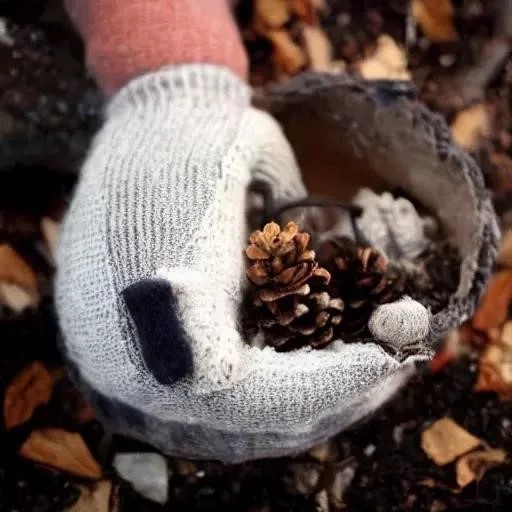As autumn’s vibrant palette fades into the crisp, cooler days of November, many gardeners might be tempted to put away their tools, declaring the season’s work done. However, this seemingly quiet month is, in reality, a profoundly pivotal period, offering an unparalleled opportunity to lay robust foundations for a spectacular spring and a bountiful summer harvest. Far from being a time for dormancy, November is a strategic window, inviting diligent hands to perform crucial tasks that will dramatically shape the future vitality and productivity of your green spaces. Embrace this transformative moment, for the wisdom of seasoned horticulturists consistently reveals that the true secret to a flourishing garden lies in proactive, thoughtful preparation during these often-underestimated weeks.
Indeed, overlooking November’s potential is akin to a chef neglecting to prep their ingredients before a grand feast; the eventual outcome will inevitably lack the desired richness and complexity. This month, characterized by falling leaves and a tangible shift towards winter’s embrace, is not merely about tidying up but about purposeful action. By integrating insights from years of accumulated gardening wisdom and embracing innovative techniques, you can transform your garden from a mere plot of land into a resilient ecosystem, poised to burst forth with unparalleled vigor when spring finally arrives. The proactive steps taken now are an investment, promising compound returns in beauty, flavor, and ecological health.
Understanding the critical tasks for November can be simplified into key categories, ensuring no vital step is missed:
| Category | Key November Tasks | Why It Matters |
|---|---|---|
| Winterizing & Protection | Apply thick layers of organic mulch to perennial beds, sensitive shrubs, and vegetable gardens. Protect tender plants with burlap or frost covers. Drain and store irrigation systems. | Insulates roots from freezing temperatures, conserves soil moisture, prevents winter damage, and extends the life of garden infrastructure, guaranteeing plant survival. |
| Soil Health & Preparation | Incorporate compost and other organic matter into empty beds. Plant cover crops (e.g., winter rye, clover) in unused areas. Perform soil tests if concerns exist regarding nutrient deficiencies. | Enriches soil fertility, improves structure and aeration, suppresses weeds, prevents erosion, and meticulously sets the stage for robust plant growth next spring, fostering a thriving environment. |
| Planting for Future Blooms/Harvests | Plant spring-flowering bulbs (tulips, daffodils, hyacinths). Sow garlic cloves for a summer harvest. Consider planting bare-root trees and shrubs in suitable climates, allowing them to establish. | Allows bulbs and roots to establish before deep freeze, resulting in earlier, stronger blooms and significantly larger, more flavorful harvests come spring, maximizing your garden’s output. |
| Garden Maintenance & Planning | Clean, sharpen, and oil tools, then organize the shed. Review seed catalogs, plan next year’s garden layout and crop rotations. Remove diseased plant material to prevent carryover. | Extends tool lifespan, prevents disease carryover, and enables thoughtful, strategic garden design for maximized efficiency, aesthetic appeal, and overall garden health. |
For further general gardening guidance and detailed seasonal advice, you may consult reputable horticultural resources like the Royal Horticultural Society (RHS).
The Art of Winterizing: A Shield Against the Cold
One of the most critical endeavors during November is the meticulous process of winterizing your garden. Think of it as preparing your botanical friends for a long, rejuvenating slumber. Applying a generous, insulating layer of organic mulch – perhaps shredded leaves, straw, or wood chips – across perennial beds and around the bases of sensitive shrubs is an incredibly effective strategy. This protective blanket shields delicate root systems from the harsh fluctuations of freezing and thawing, which can heave plants right out of the ground. Furthermore, for those tender plants that cannot withstand prolonged cold, November is the ideal moment for carefully bringing them indoors or providing robust frost covers, thereby ensuring their triumphant return come spring. This foresight is remarkably simple yet profoundly impactful.
Cultivating Tomorrow: The Imperative of Soil Health
Beyond protection, November provides an unparalleled canvas for enhancing your soil’s vitality. Industry experts often declare that a thriving garden begins beneath the surface, and this month offers a prime opportunity to enrich that foundation. Incorporating well-rotted compost and other organic matter into empty vegetable patches and flower beds dramatically improves soil structure, aeration, and nutrient retention. Alternatively, planting cover crops like winter rye or crimson clover in unused areas acts as a living mulch, preventing erosion, suppressing weeds, and meticulously adding nitrogen back into the soil, creating a remarkably fertile environment for the subsequent growing season. This foresight is truly an investment in the long-term health of your entire ecosystem, promising sustained productivity.
Planting Dreams: Sowing Seeds for Future Joy
Remarkably, November is also a prime planting season for certain types of flora, embodying the forward-looking spirit of the diligent gardener. This is the quintessential time for tucking spring-flowering bulbs — think vibrant tulips, cheerful daffodils, and fragrant hyacinths — into their winter beds. Buried beneath the cooling earth, these dormant treasures will patiently await spring’s warmth, only to erupt in a dazzling display of color that invigorates the landscape after winter’s monochrome. Similarly, garlic cloves, planted now, will establish robust root systems over the winter, resulting in significantly larger and more flavorful bulbs next summer. By embracing this strategic planting window, you are actively cultivating future joy and tangible rewards.
Strategic Oversight: Preparing for Spring’s Grand Entrance
Finally, November invites a comprehensive review and meticulous preparation for the season ahead. Cleaning, sharpening, and oiling your gardening tools before storing them away not only extends their lifespan but also ensures they are gleaming and ready for action when the first signs of spring emerge. This period is also perfect for a reflective stroll through your garden, assessing last season’s successes and challenges. Armed with this invaluable knowledge, you can dive into seed catalogs, dreaming up new layouts, experimenting with innovative crop rotations, and meticulously planning next year’s botanical masterpiece. This thoughtful, proactive approach transforms gardening from a seasonal chore into a continuous, evolving journey of creation and anticipation.
The Promise of a Proactive November
Ultimately, November gardening is not about winding down; it is about powering up. It is a testament to the enduring cycle of nature and the gardener’s pivotal role within it. By embracing these essential tasks – from insulating delicate plants to enriching the very soil beneath our feet and planting the seeds of future beauty – we are actively participating in a grand, optimistic vision for our outdoor spaces. This month’s efforts are a profound commitment to resilience, productivity, and the sheer, unadulterated joy that a vibrant garden invariably brings; So, pick up your tools, brave the crisp air, and sow the seeds of next year’s success; your garden, and your spirit, will undoubtedly thank you for it.






